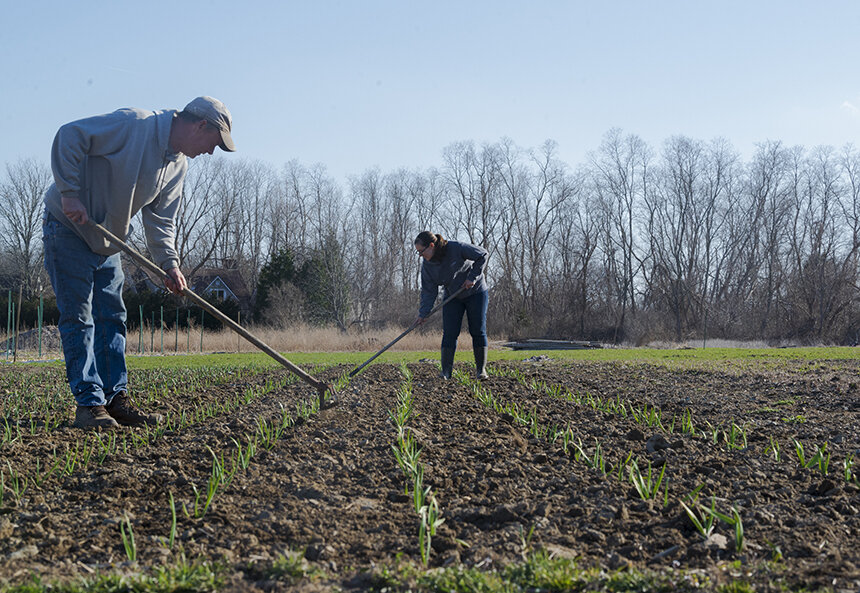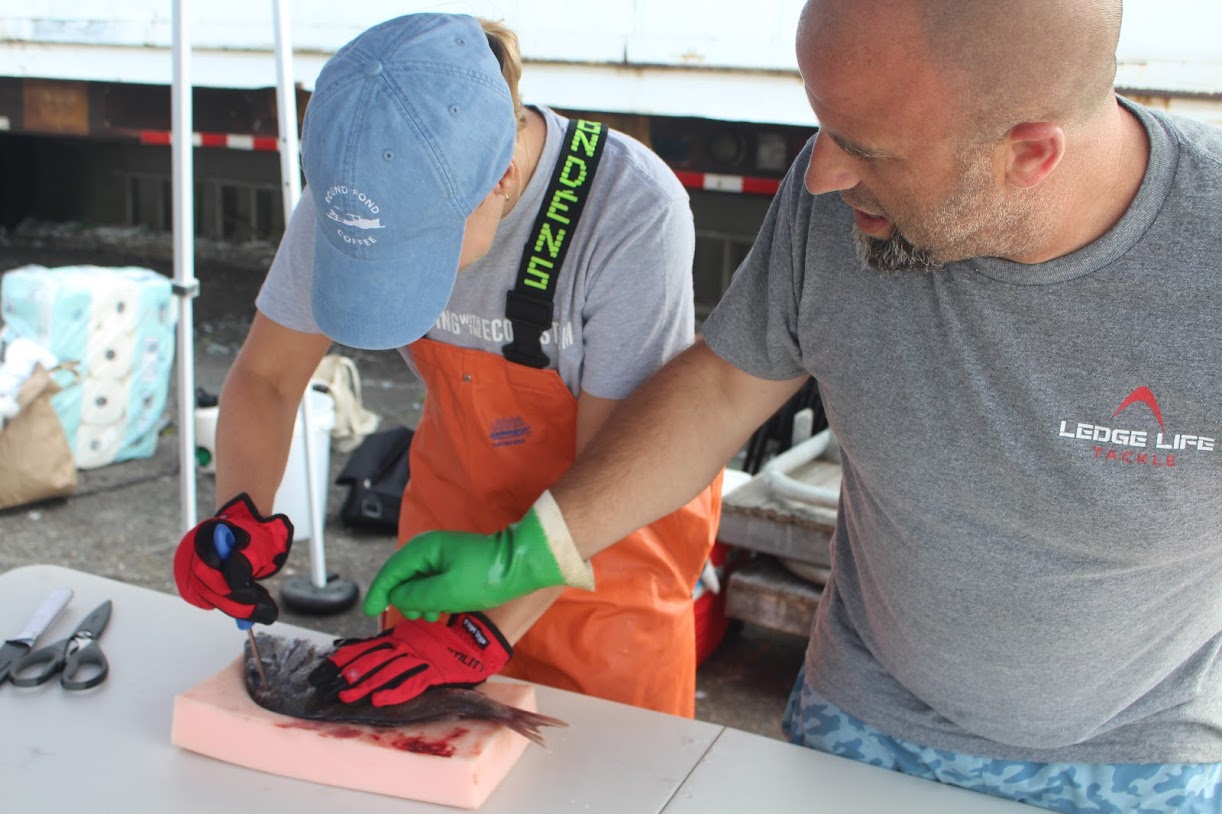Funding for Farmland Preservation in Rhode Island Dries Up
April 10, 2023
PROVIDENCE — Advocates are warning state officials that Rhode Island farmland is on the brink of extinction as state farmland conservation programs lose funding.
Traditionally, the conservation programs run by the Agriculture Lands Preservation Commission (ALPC) receive funding infusions from Green Economy bond questions that regularly appear at the ballot box. But the $38 million green bond approved by voters last year had no money in it for farmland conservation.
“If there’s no money for this, then really by the time of the next green bond, there will be no money left at all [for farmland conservation],” said Diane Lynch, president of the Rhode Island Food Policy Council and a ALPC member. “The ALPC will just not be able to do anything, because you can’t sit at the table if you have no money.”
After accounting for its current conservation obligations, the ALPC will have $317,000 left in its coffers, according to the commission. The last time it received funding was from the 2021 green bond, which included $3 million for both forest and farmland preservation.
In the meantime, applications for farmland preservation are piling up. The ALPC has nearly 50 farms it is working with to buy farmland and furnish easements, but the commission’s limited budget means only a small sliver of active projects are actually being worked on.
“We’re talking about two years,” Lynch said about the funding gap. “If we were to try to do all the deals we think we’re going to do, we would not have enough money to do them all between now and 2025.”
Next year’s state budget as proposed by Gov. Dan McKee’s administration includes no additional money for farmland conservation.
In an emailed statement to ecoRI news, Michael Healey, spokesperson for the state Department of Environmental Management, wrote, “As an executive agency, DEM has no role in proposing or advocating for additional funding for any program that was not included in the administration’s submitted budget. We have heard from both farmers and legislators who support an authorization for farmland preservation in the next state budget.”
Companion legislation in the General Assembly introduced into the Senate by Sen. Louis DiPalma, D-Middletown, and in the House by Rep. Michelle McGaw, D-Portsmouth, would allocate $5 million to DEM for farmland conservation. Neither bill has been scheduled for a committee hearing as of this writing.
In a state as small and densely populated as Rhode Island, farmland is at a premium. At $16,468 per acre on average, it’s some of the most expensive farmland in the nation. As calls grow louder for more affordable housing and renewable energy installations, the development pressures on farmland have intensified.
Farmland is especially attractive to developers: the land is already cleared for building, and the profit motive to build housing or solar is much greater than it is for farmland. As a generation of current farmers contemplate retirement, selling the family farm becomes a more attractive option.
“We don’t have the same scenario we did 50 or 100 years ago where if you were a farmer, you passed your farm on to your kids, because sometimes kids are doing different things with their careers and didn’t plan on staying with the family farm,” said Kate Sayles, director of the Rhode Island Land Trust Council. “Sometimes when the money is so significant in terms of development, it’s really hard to say no.”
Between 2001 and 2016, Rhode Island lost 4% of available farmland to development, with an estimated farm revenue of $3.7 million, according to the American Farmland Trust.
Over the past decade solar has been a growing development pressure on farmland, according to Lynch. Agriculture land is attractive to solar developers, much for the same reason it is to residential developers: the land is flat, empty, cheaper than already-developed land and farmers are often willing to sell, Lynch said.
State officials acknowledged these development pressures on Rhode Island farms in 1981 when they established the ALPC, with the express mission of slowing down the development of farmland and identifying the most important parcels to buy and endow with permanent conservation easements.
The ALPC acts as a central clearinghouse for farmland preservation. Securing an easement or buying property from a retiring farm owner can get complicated, involving high-level legal documents and financing from federal and state programs and banks. When it furnishes a conservation easement for a piece of property, it guarantees that its deed restrictions will only ever allow it to be farmland, forever.
Rhode Island is estimated to have 50,000 acres of farmland, and since 1985 the ALPC has preserved 8,000 acres across 124 individual farms.
For Lynch, farm preservation is the key to bolstering food security. Farms saw a big bump in business in local customers during COVID, Lynch said, because of the supply-chain disruptions brought on by the pandemic. She sees the local food system complementing the existing industrial food supply chains.
“If you really want meat that is produced sustainability or in an environmentally sustainable way, you are probably going to turn to a local meat farmer,” Lynch said. “You’re not going to get it from whatever JBL is doing out in Iowa, and it’s the same thing with freshness. Global supply chains have to be in transit for weeks, and it’s just not that fresh. It can’t be.”
Keeping farmland as farmland is a key goal of many of Rhode Island’s land trusts, as farmland is better for the environment than many of the residential or commercial subdivisions that may go up in its place.
Well-managed farms can provide food and shelter to wildlife, help control flooding and prevent erosion, protect wetlands, watersheds and air quality, and improve the overall health of local soil.
State officials may also leave federal dollars on the table. The Inflation Reduction Act sets aside $370 million for energy and climate change spending and is expected to include money for sustainable agriculture that states will be required to match.
“Voters in the state of Rhode Island are all in for the environment,” Sayles said. “But when we get stuck and we don’t have [money] for the line item, what are we going to do?”




A Washington Post investigation showed that you really can’t figure out where the meat you buy in a grocery store comes from — and Brazil is breaking all kinds of laws and destroying the rain forest to breed cattle. The US is now Brazil’s second biggest customer. When I tried to figure out how to buy meat that I know is raised in the US, the most obvious answer is to buy local meat. Save the farms!
It is disappointing that none (or few) in government are thinking about this. That said, “affordable housing” is on everyone’s mind now, and added housing and solar farms run counter to farm preservation (as the story points out). Soon, we will have to face this dilemma. It will be tricky. The more discussion and planning now, the better. But time is short.
Build affordable housing for farm cooperatives. Every affordable housing project should have garden space, every farm saved should include housing for future farmersd.
Every effort must be taken to support our family farmers. We must support them and ensure the viability of their farms for generations to come. Family farmers are the lifeblood of our country.
I found it odd that the article did not include information about the programs available through the Natural Resources Conservation Service (NRCS) that is run by the state office of the Department of Agriculture. It is true that state funds are very often used as match to the NRCS funding, but it’s also true that thanks to the infrastructure funding going out to the states, there is a once in a lifetime opportunity to connect these programs more holistically. I agree that we shouldn’t be replacing viable farms with poorly sited development that exacerbates all the social, environmental, and climate problems we experience. Some recent research has found that properly sited arrays can provide shade, reduce water evaporation, and create micro-habitats for a number of crops and livestock.
Connect the dots people!!!